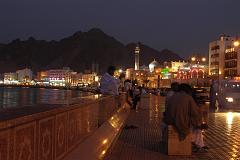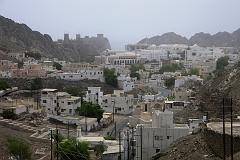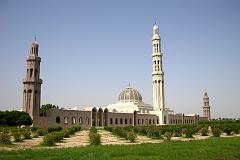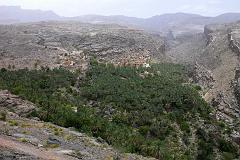
 |
Home | References | Contact |
Links To Photo Galleries




Updated: February 2009. Click on an image to see the FULL size with a caption.
Oman has mountains, beaches, sun and excellent hotels, plus souqs, mosques and splendid museums. You can even drink the water. Best of all, Oman is a peaceful, stable country in a region not known for its calm. Oman has ancient forts and castles and is the place Sinbad the Sailor called home. It has mysterious bazaars, gold, frankincense and myrrh, and a conservationist, benevolent sultan who is doing a wonderful job of easing Oman into the modern world without losing its magic. Oman has been ruled by the same family for 250 years and until 1970 was a backwater - insular, invisible and illiterate, one of the poorest countries in the world. Sultan Qaboos bin Said Al Said, the ruler of Oman since he eased his father out of power in 1970, has transformed Oman, yet kept its best traditions.
Wedged along a relatively narrow strip of land between mountains and sea, Oman’s capital city of Muscat is a beautiful city mixing the old and the new, natural beauty and buildings with a consistent homage to traditional architecture. On the one hand, it symbolizes Oman's glorious past while on the other the quality of its contemporary architecture, infrastructure and services to commerce and industry place it among the ranks of the world's most developed capital cities.
Greater Muscat is made up of three distinct cities, each with its own particular identity. Muscat proper is the old port area given over to palace administration, a small area with few shops and no hotels. Mutrah, to the northwest, is the main trading district with the country’s most important harbour. Ruwi, built on a grid-plan in a valley a few kilometres inland, has developed only in the late 20C into a modern commercial and administrative centre. Still newer parts are the largely residential suburb of Qurm, and Medinat Qaboos with many government buildings, west of Mutrah on the coast. Al-Bustan, south of Muscat, boasts a luxury hotel: the Al-Bustan Palace Hotel.